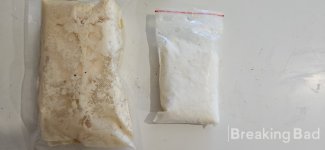Alphamethylphenethylamine (amphetamine) synthesis
479Mb (.mp4)
1-Phenyl-2-nitropropene (P2NP) reduction to α-methylphenylethylamine by aluminium...
1-Phenyl-2-nitropropene (P2NP) reduction to α-methylphenylethylamine by aluminium...
Last edited by a moderator:

